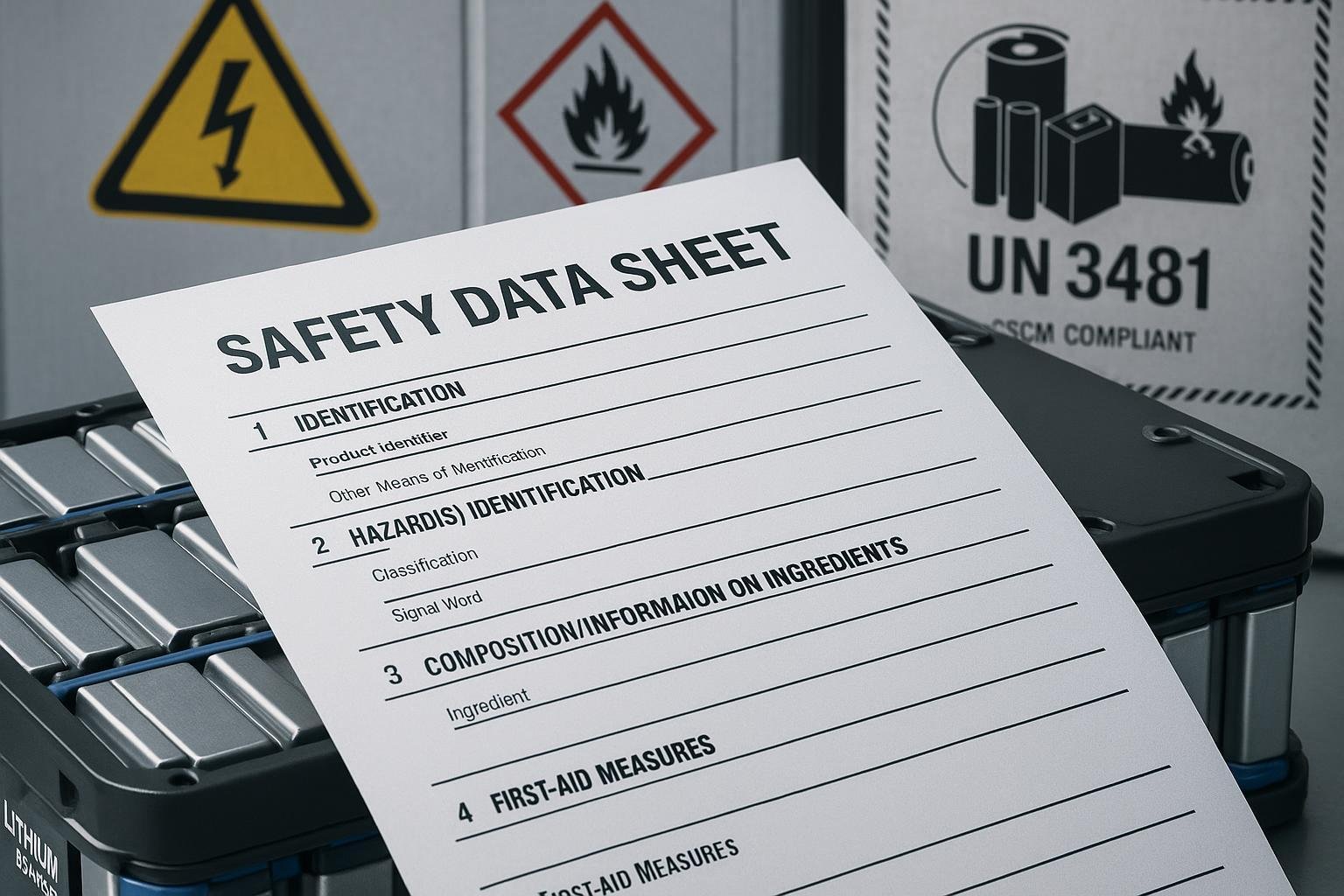
Definition in einem Satz
A Safety Data Sheet (SDS), formerly known as a Material Safety Data Sheet (MSDS), is a standardized document providing detailed information on chemical hazards, safe handling, emergency procedures, and regulatory compliance for substances and products like lithium batteries.[1]
In-Depth Explanation
SDSs (and the legacy term MSDS) serve as critical resources in chemical safety and occupational health. Following the Globally Harmonized System (GHS) and mandated by U.S. OSHA regulations since 2012, the SDS format uses 16 harmonized sections covering hazard identification, chemical composition, first-aid, firefighting, accidental releases, safe storage, exposure controls, toxicology, transportation, and regulatory data. This harmonization ensures clear, universal communication of risks across industries and borders.[2]
In the lithium battery sector, SDSs are particularly important because lithium-ion and lithium-polymer batteries are classified as hazardous chemicals in most workplace and commercial supply settings. These documents guide safe manufacturing, export, shipping, and emergency response procedures.
Key Components of an SDS
A compliant SDS contains these core segments:
- Identification: Product and company details.
- Hazard(s) identification: Physical/health hazards, label elements.
- Composition/information on ingredients: Material breakdown.
- First-Aid measures: Emergency steps.
- Fire-Fighting measures: Suitable extinguishing methods.
- Accidental Release measures: Containment/cleanup.
- Handling and Storage: Safe practices and precautions.
- Exposure Controls/Personal Protection: Required PPE, limits. 9-16. Additional sections: Physical/chemical properties, stability, toxicology, ecological info, disposal, transport, regulatory details, and other information (all as prescribed by GHS/OSHA).
For lithium batteries, these sections highlight chemical and electrical hazards, risks of thermal runaway, and may reference essential documents like UN 38.3 test summaries for transport safety compliance.
Practical Applications in Lithium Battery Manufacturing & Logistics
For manufacturers or exporters:
- When is an SDS required? For most workplace, OEM, or industrial battery shipments—not for consumer-packaged devices or retail sales, which may be exempt under the consumer product rules.
- What does it ensure? Legal shipping (air/sea), global regulatory acceptance, and rapid emergency response.
- What about exemptions? Lithium batteries are usually not exempt as “articles” under OSHA for workplace use; thus, an SDS is needed. For pure retail/consumer batteries, an Article Information Sheet (AIS) may suffice.
- How is it used? Attached to shipments, filed in warehouses/facilities, and shared with distributors, compliance officers, and emergency responders.
Example: A lithium battery pack intended for OEM industrial robotics must ship with an SDS, a UN 38.3 report, and be correctly labeled for hazard compliance—enabling both regulatory passage and transport safety. In contrast, a retail-sold battery in a smartphone often requires only an AIS, unless local law specifies otherwise.
Related and Complementary Concepts
- Hazard Communication Standard (HCS): OSHA regulation mandating SDS use in workplaces.
- Globally Harmonized System (GHS): International framework unifying SDS structures.
- UN 38.3: UN testing protocol for battery safety during transport.
- Article Information Sheet (AIS): Alternate documentation for products exempted as “articles.”
- IATA/IMDG: International air/sea transport standards referencing SDS and other documents.
Learn more on official sites: OSHA SDS Standard, Wikipedia – Safety Data Sheet, oder Research at University of Iowa.
Summary
An SDS/MSDS is indispensable for lithium battery manufacturers and exporters, ensuring global compliance, safe handling, and efficient emergency response. Knowing the line between “article” exemptions and required chemical documentation is critical—especially as lithium battery transport and safety regulations evolve worldwide.

